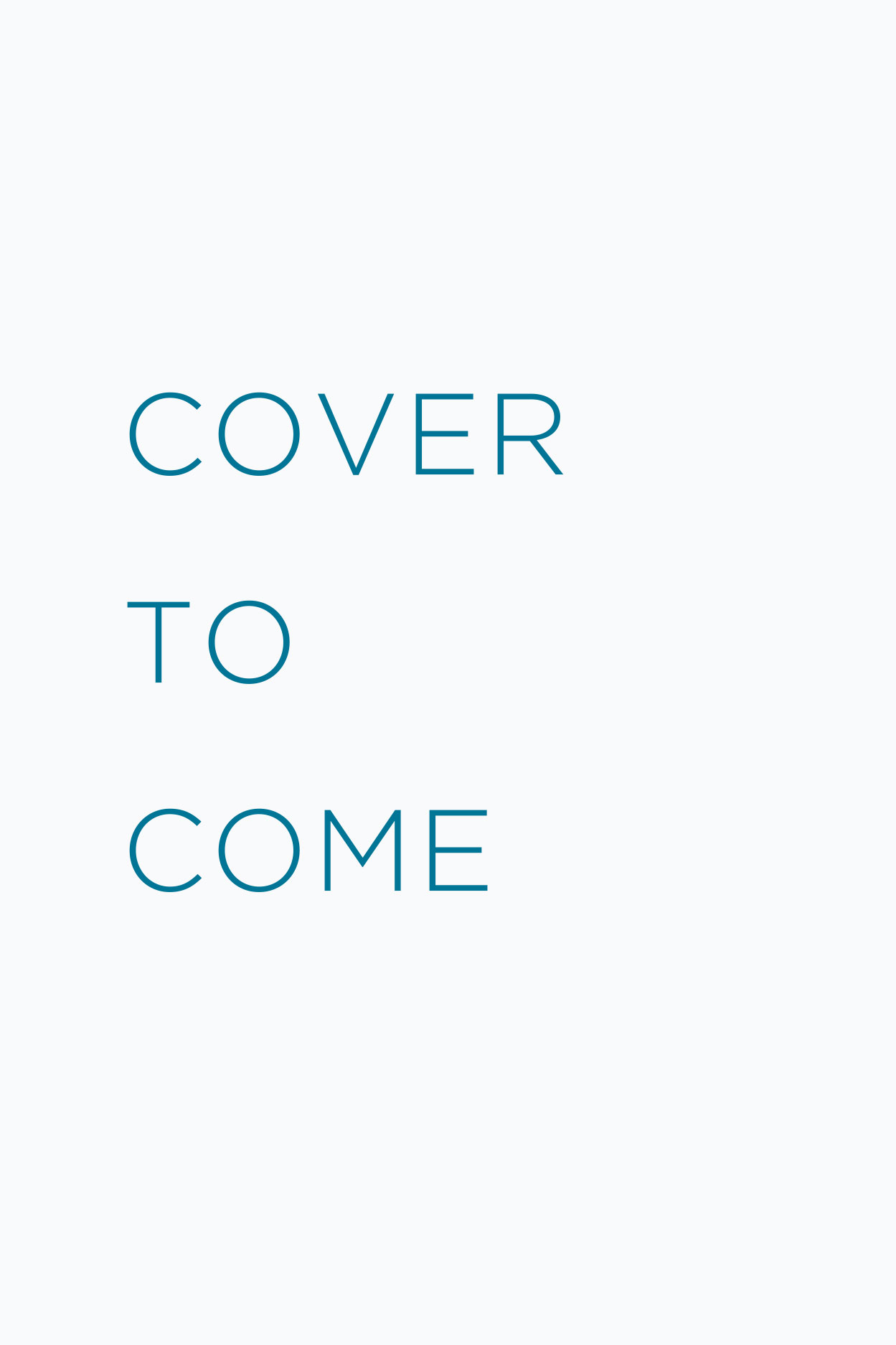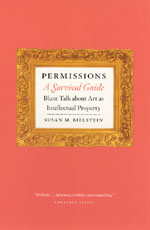An excerpt from
Permissions,
A Survival Guide
Blunt Talk about Art as Intellectual Property
Susan M. Bielstein
Chapter 3
Bleeding Dollars and Euros and Pounds and Yen
To begin at the present moment.
“Will there always be art books?” you ask. “Just as there will always be the moon and the stars?”
Ten years ago I would have answered without hesitation “of course.” Today I’m not so sure. Between dwindling sales and the soaring costs of acquiring illustrations and the permission to publish them, this segment of the publishing industry has become so severely compromised that the art monograph is now seriously endangered and could very well outpace the silvery minnow in its rush to extinction.
 | |
| Figure 1. Frances Bacon, Study after Velázquez's Portrait of Pope Innocent X (1953). The Bacon Estate asked to read the relevant text for this image and subsequently refused copyright permission to publish it. | |
You would be right to ask: How can this be? Art history is a discipline that seems reasonably stable. In the United States the field turns out, on average, 220 PhDs a year, and it is one of the few fields with multiple markets for its research. Not only are there sixty-five hundred full-time faculty teaching at four-year colleges and universities in this country, but there are also studio people and curators at museums who constitute sizable markets for scholarly books.
Each year at the College Art Association meeting, I take a few minutes to stroll through the book exhibits, examining what’s on offer from other publishers. I wander the aisles slowly, up and down . . . past thousands upon thousands of volumes. I ask myself, Who actually reads all these books? Does anybody read them? Certainly, very few people are buying them.
With such grim numbers, why not seek other ways to publish these studies? On the Internet, for example, or as
Every day we receive alarming reports from the field: ten thousand dollars spent in fees for a narrowly conceived book about illuminated manuscripts . . . twenty, thirty thousand dollars for studies situated in the twentieth century—hideous sums invested in works that will likely sell fewer than a thousand copies. As one author said to me recently about the money she’d had to spend on her first book: “I’d rather have paid cash for a car, thank you very much.”
What is most troubling is the raging misapprehension at loose in certain sectors of the art world that just because publications are for sale, ergo, they generate profits.
Many artists, collectors, and museums seem determined to cling to the belief that writers and publishers are getting rich at their expense.
They are badly mistaken. Not only are writers and publishers not getting rich—they are hemorrhaging dollars and Euros nearly every time a book goes to press.
The irony remains that in this late capitalist culture with its spectacle of images, where the written word seems positively paleographic and the book imperiled, as we turn more and more to the object of vision for information and learning, it is becoming harder and harder and impossibly expensive to include illustrations in books.
Why so expensive?
The answer, put simply, is that nobody has any money anymore. Cultural and educational funding has diminished in the United States and throughout Europe, and we must all rely increasingly on our own schemes and assets to generate the income needed to keep programs running and the doors open. At museums this takes many forms: from the mounting of exhibitions and the loan of important artworks to ever more broadly pitched fund-raising efforts ranging from evening socials and wine tastings to adventure trips up the Nile.
Another income-generating source for museums involves licensing and reproducing images for publication. Depending on the size of the institution and the range of its collection, this can vary from an administrative assistant processing a handful of requests each week to a full-blown rights and permissions department buzzing behind that blue door, headed more often than not these days by a merchandising expert whose credentials are firmly in retail.
At some financially strapped museums, this income stream is a lifeline; for others, the income may be only modest. But what we find increasingly—as sources of images proliferate and as scholars’ tastes broaden to encompass all facets of visual culture—is that this activity is becoming less about the provision of actual images and more about cultivating a brisk trade in the abstract commodity of “permission.”
We live in a world of permissions, now more than ever, as the creative and commercial possibilities of the Internet make us increasingly preoccupied with access and control. In fact, the ritual of asking—and granting or withholding—permission has become so deeply embedded in our “cyber psyche” as to put forth a neural glow and, like a widening gyre, has created large-scale disturbances in what public policy analyst David Bollier calls the “ecosystem of creativity.” As another pundit puts it, “Life in our licensed culture has begun to feel natural.”
Permissions are hard to avoid, but in principle you don’t want to ask permission to publish an image unless you absolutely must. Deciding that you must depends on several factors: the law, yes, but also the extent of its practical application. It further depends on the kind of artwork you wish to reproduce: Is it two- or three-dimensional? A film frame or a photo still? And it depends not least on your publisher’s opinions and on the willingness of artists, estates, and institutions to tolerate your antics. The bottom line is that context is everything—for the letter of the law will only take you so far, as by now you’ve surely gleaned.
To ask permission to publish an image or not? That is the question that torments authors. Some editors will urge you to err on the side of caution, to seek every conceivable kind of permission for every little thing. But as anyone who has had to clear permissions knows, caution is not always the safer course. By asking someone for permission to publish an image, you are granting them the right to say no, although what rights owners are more likely to say these days is: “Sure, but it’s gonna cost you.”
Asking permission when you don’t need to can prove extremely awkward later if you go back to a lender to say, “Sorry! Turns out I don’t need your silly old permission anyway.” Perry Cartwright, rights manager at the University of Chicago Press, compares it to letting the cat out of the bag. Once you do, it’s near impossible to shove the squirming beast back in.
Asking permission zealously and unnecessarily also catches you up in a mentality of acquiescence. Acquiescence is a wasting disease rooted in anxiety and ignorance, and it helps propel the all-consuming permissions culture: just as you may feel anxiously compelled to bow to a property owner’s extralegal demands, artists sometimes fear (erroneously) that if they ignore even a single attempt to use their work without permission, they may be relinquishing their own claim to it. In the quotidian world of intellectual property, acquiescence operates far beneath the beacon eye of statute or treaty, and capitalizing on it is not good for anyone’s health. It wastes time, it wastes money, and it produces a compliant society vulnerable to abuse and wholesale ideological shifts in the law.
So before you start rushing around asking permission for everything, you need to think carefully about your writing project and consider it in light of the legal issues, social principles, and professional practices described here—which is to repeat, you’ll want to establish a context for it. Is yours a scholarly effort or a trade book destined for the coffee table? Are you writing in the sciences or in the humanities? Are you publishing an article for which you will receive no remuneration, or are you completing a college textbook that will generate income? When you ask permission, are you reinforcing or undermining the delicate balance of rights between individuals and the broader culture of which they are members?
Without question, the subject of permissions is complicated, and one of the points of this book is to water the issue and make it bloom, thorns and all.
Copyright notice: Excerpt from pages 1-10 of Permissions, A Survival Guide: Blunt Talk about Art as Intellectual Property by Susan M. Bielstein, published by the University of Chicago Press. ©2006 by Susan M. Bielstein. All rights reserved. This text may be used and shared in accordance with the fair-use provisions of U.S. copyright law, and it may be archived and redistributed in electronic form, provided that this entire notice, including copyright information, is carried and provided that the University of Chicago Press is notified and no fee is charged for access. Archiving, redistribution, or republication of this text on other terms, in any medium, requires the consent of the University of Chicago Press. (Footnotes and other references included in the book may have been removed from this online version of the text.)
Susan M. Bielstein
Permissions, A Survival Guide: Blunt Talk about Art as Intellectual Property
©2006, 188 pages, 35 halftones, 1 line drawing, 1 table
Cloth $30.00 ISBN: 0-226-04637-0
Paper $15.00 ISBN: 0-226-04638-9For information on purchasing the book—from bookstores or here online—please go to the webpage for Permissions, A Survival Guide.
See also:
- A catalog of books for writers, editors, and publishers
- A catalog of books art titles
- Other excerpts and online essays from University of Chicago Press titles
- Sign up for e-mail notification of new books in this and other subjects
- Read the Chicago Blog
